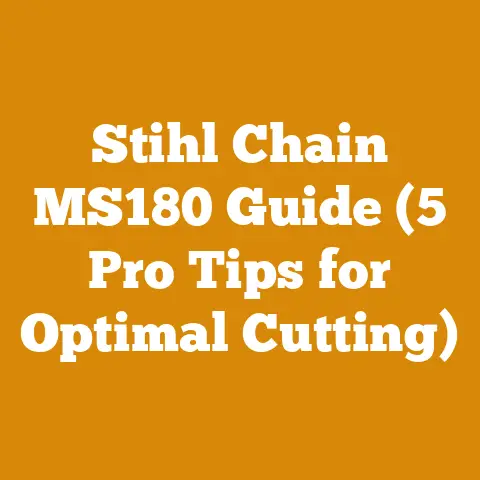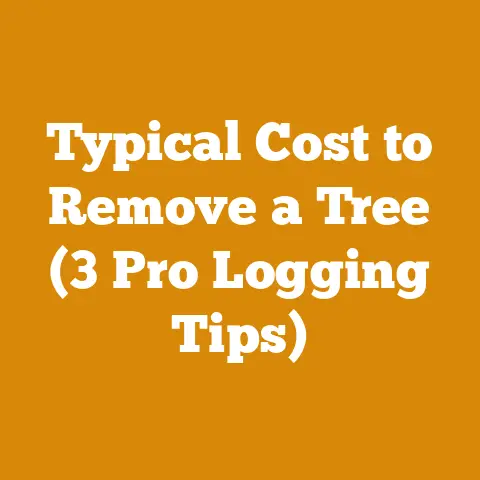Easy Petrol Post Driver Guide (Pro Tips for Quick Wood Posts)
Imagine this: Before, wrestling with a manual post driver was a back-breaking, time-consuming ordeal. Each post felt like a personal battle against the earth. My shoulders ached, my hands were blistered, and the fence line seemed to stretch on forever. Now? After adopting a petrol post driver, sinking posts is almost… enjoyable. The posts go in straight, true, and in a fraction of the time. What used to take days now takes hours. My body feels better, my projects get done faster, and I can finally spend more time on the things I love. That’s the power of the right tool.
Easy Petrol Post Driver Guide: Pro Tips for Quick Wood Posts
Globally, the demand for efficient and effective fencing solutions is constantly growing, driven by agriculture, construction, and land management needs. While traditional manual post drivers have their place, the rise of petrol-powered post drivers reflects a significant shift towards increased productivity and reduced physical strain. According to recent market analysis, the global fencing market is projected to reach \$32.8 billion by 2027, fueled in part by the adoption of mechanized post driving solutions. This guide is designed to help you navigate the world of petrol post drivers, offering pro tips for quick and efficient wood post installation. I’ll share my experiences, learned through years of fencing projects, to help you avoid common pitfalls and maximize your investment.
Understanding the Need: Why Petrol Post Drivers?
Let’s face it, swinging a manual post driver is tough work. It’s physically demanding, slow, and often inaccurate, especially in hard or rocky soil. Petrol post drivers, on the other hand, utilize a small petrol engine to deliver powerful, consistent blows, driving posts into the ground with minimal effort. They are especially useful when you’re dealing with a large number of posts or difficult ground conditions.
Key Benefits:
- Reduced Physical Strain: This is the biggest advantage. Say goodbye to aching backs and sore muscles.
- Increased Speed: Petrol drivers can install posts significantly faster than manual methods. I’ve personally seen a 50-75% reduction in installation time on larger projects.
- Improved Accuracy: Consistent hammering ensures posts are driven straight and true.
- Versatility: Many models can handle a range of post sizes and types.
- Efficiency: Requires less manpower, meaning fewer workers needed for the same job.
Choosing the Right Petrol Post Driver: A Buyer’s Guide
The market offers a range of petrol post drivers, each with its own features, strengths, and weaknesses. Selecting the right one for your needs is crucial.
Factors to Consider:
- Engine Size: Measured in cubic centimeters (cc), engine size determines the power of the driver. Larger engines are better suited for tougher ground and larger posts. I’ve found that engines in the 50-60cc range offer a good balance of power and portability for most fencing applications.
- Impact Force: Measured in joules (J), impact force indicates the strength of each blow. Higher impact force allows for faster and easier post driving.
- Post Size Compatibility: Check the manufacturer’s specifications to ensure the driver can accommodate the size of posts you’ll be using. Most drivers come with adapters for different post diameters.
- Weight: Petrol post drivers can be heavy, so consider the weight and how easily you can maneuver it. Lighter models are easier to handle, especially on uneven terrain.
- Vibration Dampening: Prolonged use of a post driver can cause vibration-related injuries. Look for models with effective vibration dampening systems. Anti-vibration handles are a must-have, in my opinion.
- Fuel Efficiency: Petrol consumption can add up, especially on large projects. Check the manufacturer’s specifications for fuel consumption rates.
- Durability and Build Quality: Choose a driver made from high-quality materials that can withstand the rigors of regular use.
- Price: Petrol post drivers range in price from a few hundred to several thousand dollars. Set a budget and compare models within your price range.
- Warranty and Service: A good warranty and readily available service and parts are essential for long-term reliability.
Popular Brands and Models:
- Rhino Tool Company: Known for their powerful and durable post drivers, Rhino is a popular choice among professionals.
- Atlas Copco: Offers a range of pneumatic and hydraulic post drivers suitable for heavy-duty applications.
- Ryobi: Provides more affordable options suitable for smaller projects and occasional use.
- XtremepowerUS: A budget-friendly brand that offers decent performance for the price.
My Recommendation:
For most fencing projects, I recommend a petrol post driver with an engine size of 50-60cc, an impact force of at least 40 joules, and a weight of around 30-40 pounds. Look for models with good vibration dampening and a reputation for durability. While it might be tempting to go for the cheapest option, investing in a quality driver will save you time, money, and frustration in the long run. I learned this the hard way after a cheap driver broke down halfway through a large fencing project.
Preparing for the Job: Safety First
Before you even think about starting the engine, safety must be your top priority. Petrol post drivers are powerful tools, and misuse can lead to serious injuries.
Essential Safety Gear:
- Safety Glasses: Protect your eyes from flying debris.
- Hearing Protection: Petrol post drivers are loud. Wear earplugs or earmuffs to prevent hearing damage.
- Work Gloves: Protect your hands from blisters and vibrations.
- Steel-Toed Boots: Protect your feet from accidental impacts.
- High-Visibility Clothing: Make sure you are visible to others, especially in busy work areas.
Pre-Operation Checklist:
- Read the Manual: Familiarize yourself with the driver’s operating instructions and safety precautions.
- Inspect the Driver: Check for any signs of damage or wear. Ensure all bolts and screws are tightened.
- Check Fuel and Oil Levels: Make sure the driver has enough fuel and oil. Use the correct type of fuel and oil as specified in the manual.
- Clear the Work Area: Remove any obstacles that could trip you or interfere with the operation of the driver.
- Identify Underground Utilities: Before driving any posts, check for underground utilities such as gas lines, water pipes, and electrical cables. Contact your local utility companies for assistance.
Important Safety Tips:
- Never operate the driver while under the influence of alcohol or drugs.
- Never allow untrained personnel to operate the driver.
- Keep your hands and feet away from the driving head while the driver is running.
- Never point the driver at yourself or others.
- Always turn off the engine and disconnect the spark plug before performing any maintenance or repairs.
- Store the driver in a safe and secure location when not in use.
Step-by-Step Guide to Using a Petrol Post Driver
Now that you’re prepared, let’s get to the actual post driving. Here’s a detailed, step-by-step guide to using a petrol post driver effectively:
Step 1: Mark the Post Locations
Use a measuring tape and marking paint or stakes to accurately mark the locations for each post. Proper spacing is crucial for a strong and aesthetically pleasing fence. I usually use a string line to ensure all the posts are aligned.
Step 2: Prepare the Ground (If Necessary)
In hard or rocky soil, it may be necessary to pre-drill a pilot hole using an auger or post hole digger. This will make it easier to drive the posts and prevent them from bending or breaking. I’ve found that a pilot hole that’s about half the diameter of the post is usually sufficient.
Step 3: Position the Post Driver
Place the post driver over the post, ensuring the post is centered within the driving head. Some drivers have adjustable collars to accommodate different post sizes.
Step 4: Start the Engine
Follow the manufacturer’s instructions for starting the engine. Most petrol post drivers have a pull-start mechanism. Be prepared to give it a few pulls, especially when the engine is cold.
Step 5: Drive the Post
Grip the handles firmly and apply downward pressure to the driver. The engine will begin to hammer the post into the ground. Maintain a steady pressure and keep the driver aligned with the post.
Step 6: Monitor the Post Depth
Periodically check the depth of the post to ensure it’s being driven to the desired level. Use a measuring tape or a pre-marked stake as a guide.
Step 7: Stop When You Reach the Desired Depth
Once the post reaches the desired depth, release the pressure on the driver and turn off the engine.
Step 8: Repeat for Each Post
Repeat steps 3-7 for each post in your fence line.
Pro Tips for Success:
- Use the Right Adapter: Ensure you’re using the correct adapter for the size of your posts. Using the wrong adapter can damage the posts or the driver.
- Keep the Post Driver Level: Maintaining a level driving head is crucial for driving posts straight. Use a level to check the alignment periodically.
- Don’t Force It: If the post is meeting significant resistance, stop and check for obstructions. Forcing the post can damage it or the driver.
- Take Breaks: Operating a petrol post driver can be tiring. Take frequent breaks to avoid fatigue and prevent injuries.
- Work with a Partner: Having a partner can make the job easier and safer. One person can operate the driver while the other monitors the post and ensures alignment.
Troubleshooting Common Issues
Even with the best preparation, you may encounter some issues while using a petrol post driver. Here are some common problems and how to troubleshoot them:
- Engine Won’t Start:
- Check the Fuel: Make sure there’s enough fuel in the tank and that the fuel is fresh. Old fuel can cause starting problems.
- Check the Spark Plug: Remove the spark plug and inspect it for fouling or damage. Clean or replace the spark plug as needed.
- Check the Air Filter: A dirty air filter can restrict airflow and prevent the engine from starting. Clean or replace the air filter.
- Check the Carburetor: If the engine is still not starting, the carburetor may be clogged. Clean or rebuild the carburetor.
- Post Driver Vibrates Excessively:
- Check the Vibration Dampening System: Ensure the vibration dampening system is functioning properly. Replace any worn or damaged components.
- Check for Loose Bolts: Inspect the driver for loose bolts and tighten them as needed.
- Check the Driving Head: Ensure the driving head is properly aligned and not damaged.
- Post Driver Stops Hammering:
- Check the Fuel Level: Make sure there’s enough fuel in the tank.
- Check the Spark Plug: A faulty spark plug can cause the engine to stall.
- Check the Air Filter: A dirty air filter can restrict airflow and cause the engine to stall.
- Check the Impact Mechanism: The impact mechanism may be worn or damaged. Repair or replace the impact mechanism.
- Post Bends or Breaks:
- Pre-Drill a Pilot Hole: In hard or rocky soil, pre-drilling a pilot hole can prevent posts from bending or breaking.
- Use a Sturdier Post: If you’re consistently bending or breaking posts, consider using a sturdier type of post.
- Reduce the Impact Force: Some post drivers have adjustable impact force settings. Reduce the impact force to prevent damaging the posts.
Maintenance and Care: Extending the Life of Your Driver
Proper maintenance is essential for extending the life of your petrol post driver and ensuring it performs reliably.
Daily Maintenance:
- Check Fuel and Oil Levels: Top up the fuel and oil as needed.
- Clean the Air Filter: Remove and clean the air filter after each use.
- Inspect for Damage: Check for any signs of damage or wear.
- Tighten Loose Bolts: Tighten any loose bolts or screws.
Monthly Maintenance:
- Change the Oil: Change the engine oil according to the manufacturer’s recommendations.
- Clean the Spark Plug: Remove and clean the spark plug.
- Grease Moving Parts: Grease any moving parts as needed.
Annual Maintenance:
- Inspect the Fuel Lines: Check the fuel lines for cracks or leaks.
- Inspect the Carburetor: Clean or rebuild the carburetor.
- Inspect the Impact Mechanism: Check the impact mechanism for wear or damage.
- Sharpen the Driving Head: Sharpen the driving head to ensure efficient post driving.
Storage:
- Drain the Fuel: Before storing the driver for an extended period, drain the fuel tank to prevent fuel from going stale.
- Store in a Dry Place: Store the driver in a dry place to prevent rust and corrosion.
- Cover the Driver: Cover the driver with a tarp or plastic sheet to protect it from dust and moisture.
Cost Analysis and Budgeting
Investing in a petrol post driver can be a significant expense. It’s important to carefully consider the costs and benefits before making a purchase.
Initial Costs:
- Petrol Post Driver: \$500 – \$3000+ (depending on the model and features)
- Safety Gear: \$50 – \$100 (safety glasses, hearing protection, gloves, boots)
- Adapters: \$20 – \$50 (for different post sizes)
Ongoing Costs:
- Fuel: \$5 – \$10 per day (depending on usage)
- Oil: \$10 – \$20 per year
- Maintenance: \$50 – \$100 per year (for parts and labor)
- Repairs: Variable (depending on the frequency and severity of breakdowns)
Cost-Benefit Analysis:
To determine whether a petrol post driver is a worthwhile investment, consider the following factors:
- Number of Posts: If you’re installing a large number of posts, a petrol post driver will likely pay for itself in time and labor savings.
- Soil Conditions: In hard or rocky soil, a petrol post driver can significantly reduce the effort required to drive posts.
- Labor Costs: If you’re hiring labor to install posts, a petrol post driver can reduce the number of workers needed and the time it takes to complete the job.
- Physical Strain: If you’re concerned about the physical strain of manual post driving, a petrol post driver can be a valuable investment in your health and well-being.
Budgeting Tips:
- Shop Around: Compare prices from different retailers to find the best deal.
- Consider Used Options: A used petrol post driver can be a more affordable option, but be sure to inspect it carefully before making a purchase.
- Factor in Maintenance Costs: Don’t forget to budget for ongoing maintenance costs, such as fuel, oil, and repairs.
- Rent Before You Buy: If you’re not sure whether a petrol post driver is right for you, consider renting one before making a purchase.
Case Studies: Real-World Applications
To illustrate the benefits of using a petrol post driver, here are a few case studies:
Case Study 1: Fencing a Large Pasture
A farmer needed to fence a 40-acre pasture to contain livestock. Using a manual post driver, it took him and two helpers nearly two weeks to install the posts. After switching to a petrol post driver, they were able to complete the job in just three days, saving them significant time and labor costs.
Case Study 2: Installing a Security Fence
A construction company needed to install a security fence around a new building site. The soil was rocky and difficult to work with. Using a petrol post driver, they were able to drive the posts quickly and efficiently, ensuring the fence was completed on time and within budget.
Case Study 3: Building a Vineyard Trellis
A vineyard owner needed to build a trellis system to support his grapevines. The posts needed to be driven deep into the ground to withstand the weight of the vines. Using a petrol post driver, he was able to drive the posts to the required depth with minimal effort, ensuring the trellis system was strong and stable.
These case studies demonstrate the versatility and effectiveness of petrol post drivers in a variety of applications.
Action Items:
- Assess Your Needs: Determine the type of fencing projects you’ll be undertaking and the size and type of posts you’ll be using.
- Set a Budget: Determine how much you’re willing to spend on a petrol post driver.
- Research Models: Research different models and compare their features, specifications, and prices.
- Read Reviews: Read online reviews from other users to get an idea of the driver’s performance and reliability.
- Visit a Dealer: Visit a local dealer to see the driver in person and ask any questions you may have.
- Make a Purchase: Once you’ve chosen the right driver, make a purchase and start enjoying the benefits of faster and easier post driving.
Additional Resources:
- Online Forums: Join online forums dedicated to fencing and post driving to connect with other users and share your experiences.
- Manufacturer Websites: Visit the websites of petrol post driver manufacturers for detailed product information and support.
- Local Dealers: Contact your local dealers for advice and assistance with selecting and maintaining your post driver.
- Rental Services: If you only need a petrol post driver for a short period of time, consider renting one from a local rental service.
Suppliers of Logging Tools and Drying Equipment:
While this guide focuses on post drivers, if you’re involved in broader wood processing or firewood preparation, here are some suppliers to consider:
- Northern Tool + Equipment: Offers a wide range of logging tools, chainsaws, and firewood processing equipment.
- Baileys: Specializes in logging tools, forestry supplies, and chainsaw parts.
- DR Power Equipment: Known for their wood chippers, splitters, and other firewood processing equipment.
- Wood-Mizer: A leading manufacturer of portable sawmills and wood processing equipment.
Drying Equipment Rental Services:
- Sunbelt Rentals: Offers a variety of drying equipment for rent, including dehumidifiers and air movers.
- United Rentals: Provides a wide range of equipment rental services, including drying equipment.
By following the tips and advice in this guide, you can confidently use a petrol post driver to quickly and efficiently install wood posts, saving you time, effort, and money. Now, get out there and build something great!






